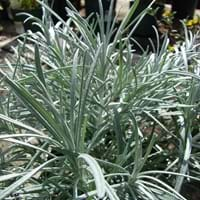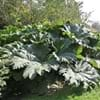Life Span
Perennial
Perennial
Type
Perennial
Tender Perennial
Origin
Hybrid origin
Central Asia
Types
Victoria Rhubarb
Colorado Red Rhubarb
Turkish Rhubarb
not available
Number of Varieties
Not Available
Habitat
gardens, Grassland, Humid climates, Tropical regions, Urban areas
Dry areas, Hot climate regions, Low annual rainfall regions
USDA Hardiness Zone
5-8
8-11
Sunset Zone
2b, 3a, 3b, 4, 5, 6, 7, 14, 15, 16, 17
16, 17, 22, 23, 24
Habit
Clump-Forming
Cushion/Mound-forming
Flower Color
Light Pink
Yellow
Flower Color Modifier
Not Available
Bicolor
Fruit Color
Burgundy
Gold, Sandy Brown
Leaf Color in Spring
Green, Dark Red
Gray Green, Silver, Gray
Leaf Color in Summer
Green, Dark Red
Gray Green, Silver, Gray
Leaf Color in Fall
Green, Dark Red
Gray Green, Silver, Gray
Leaf Color in Winter
Light Green
Light Green
Leaf Shape
Compound
Pinnate
Plant Season
Spring, Summer, Fall
Spring, Summer, Fall
Sunlight
Full Sun, Partial Sun
Full Sun, Partial Sun
Type of Soil
Clay, Loam
Loam, Sand
The pH of Soil
Acidic, Neutral, Alkaline
Neutral, Alkaline
Soil Drainage
Average
Well drained
Bloom Time
Summer, Late Summer
Early Summer, Summer
Tolerances
Drought
Drought
Where to Plant?
Ground
Container, Ground, Pot
How to Plant?
Stem Planting
Stem Planting
Plant Maintenance
Medium
Medium
Watering Requirements
Do Not over Water, Requires regular watering, Use Mulches to help prevent water loss during hot and windy weather, Water Deeply
Allow to dry out slightly between watering
In Summer
Lots of watering
Adequately
In Spring
Moderate
Moderate
In Winter
Average Water
Average Water
Soil pH
Acidic, Neutral, Alkaline
Neutral, Alkaline
Soil Type
Clay, Loam
Loam, Sand
Soil Drainage Capacity
Average
Well drained
Sun Exposure
Full Sun, Partial Sun
Full Sun, Partial Sun
Pruning
Remove damaged leaves, Remove dead branches, Remove dead leaves
Prune in spring, Remove dead leaves, Remove shoots
Fertilizers
All-Purpose Liquid Fertilizer
All-Purpose Liquid Fertilizer, Put diluted fertilizers
Pests and Diseases
Red blotch
Black Spot, Caterpillars, Gray mold, Leafminers, Mealybugs, Root rot, Stem rot, Thripes, Whiteflies
Plant Tolerance
Drought
Drought
Flower Petal Number
Not Available
Single
Fragrant Bark/Stem
No
Yes
Foliage Texture
Coarse
Medium
Foliage Sheen
Glossy
Matte
Attracts
Not Available
Not Available
Allergy
Skin irritation
Not Available
Aesthetic Uses
Showy Purposes
Not Used For Aesthetic Purpose
Beauty Benefits
Not Available
Good for the Scalp, Improve hair condition, Improve skin condition, Improve skin tone, Natural Sunscreen, Nourishes scalp, Prevents Premature Baldness, Speed hair growth
Environmental Uses
Air purification
Not Available
Medicinal Uses
Not Available
Asthma, Cramps, Menopause problems, Menstrual Disorders, Oral health, Respiratory Disorders, Skin Disorders, Skin irritation, Weight loss
Part of Plant Used
Whole plant
Root, Root bark
Other Uses
Culinary use, Used as Ornamental plant
Used As Food, Used for its medicinal properties
Used As Indoor Plant
No
No
Used As Outdoor Plant
Yes
Yes
Garden Design
Feature Plant, Mixed Border
Container, Edging, Hanging Basket, Mixed Border, Rock Garden / Wall
Botanical Name
RHEUM 'Ace of Hearts'
HELICHRYSUM thianschanicum
Common Name
Ace of Hearts Ornamental Rhubarb, Ornamental Rhubarb
Licorice Plant
In Hindi
सजावटी प्रकार का फल
मुलैठी
In German
Ornamental Rhabarber
Lakritze
In French
rhubarbe ornementale
réglisse
In Spanish
Ornamental de ruibarbo
regaliz
In Greek
καλλωπιστικά Ραβέντι
γλυκόρριζα
In Portuguese
ornamental ruibarbo
alcaçuz
In Polish
ozdobne Rabarbar
lukrecja
In Latin
decentius Rhubarb
liquorice
Phylum
Tracheophyta
Tracheophyta
Class
Not Available
Magnoliopsida
Order
Caryophyllales
Fabales
Family
Polygonaceae
Asteraceae
Clade
Angiosperms, Core eudicots, Eudicots
Angiosperms, Eudicots
Tribe
Not Available
Galegeae
Subfamily
Not Available
Faboideae
Number of Species
Not Available
Season and Care of Ornamental Rhubarb and Liquorice
Season and care of Ornamental Rhubarb and Liquorice is important to know. While considering everything about Ornamental Rhubarb and Liquorice Care, growing season is an essential factor. Ornamental Rhubarb season is Spring, Summer and Fall and Liquorice season is Spring, Summer and Fall. The type of soil for Ornamental Rhubarb is Clay, Loam and for Liquorice is Loam, Sand while the PH of soil for Ornamental Rhubarb is Acidic, Neutral, Alkaline and for Liquorice is Neutral, Alkaline.
Ornamental Rhubarb and Liquorice Physical Information
Ornamental Rhubarb and Liquorice physical information is very important for comparison. Ornamental Rhubarb height is 71.10 cm and width 81.30 cm whereas Liquorice height is 30.50 cm and width 30.50 cm. The color specification of Ornamental Rhubarb and Liquorice are as follows:
Ornamental Rhubarb flower color: Light Pink
Ornamental Rhubarb leaf color: Green and Dark Red
Liquorice flower color: Yellow
- Liquorice leaf color: Gray Green, Silver and Gray
Care of Ornamental Rhubarb and Liquorice
Care of Ornamental Rhubarb and Liquorice include pruning, fertilizers, watering etc. Ornamental Rhubarb pruning is done Remove damaged leaves, Remove dead branches and Remove dead leaves and Liquorice pruning is done Prune in spring, Remove dead leaves and Remove shoots. In summer Ornamental Rhubarb needs Lots of watering and in winter, it needs Average Water. Whereas, in summer Liquorice needs Adequately and in winter, it needs Average Water.





